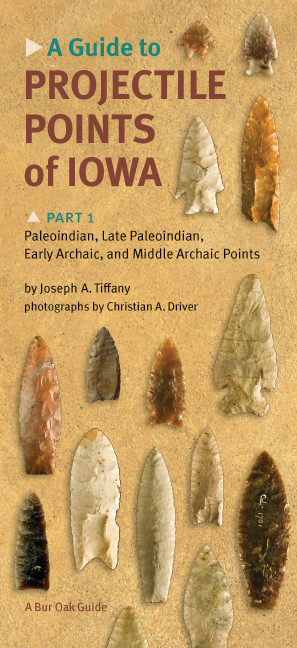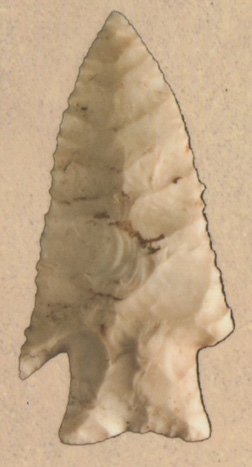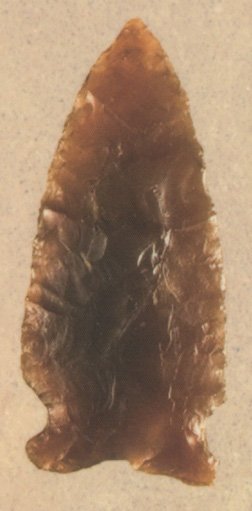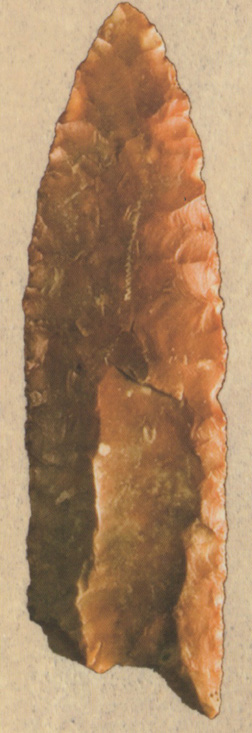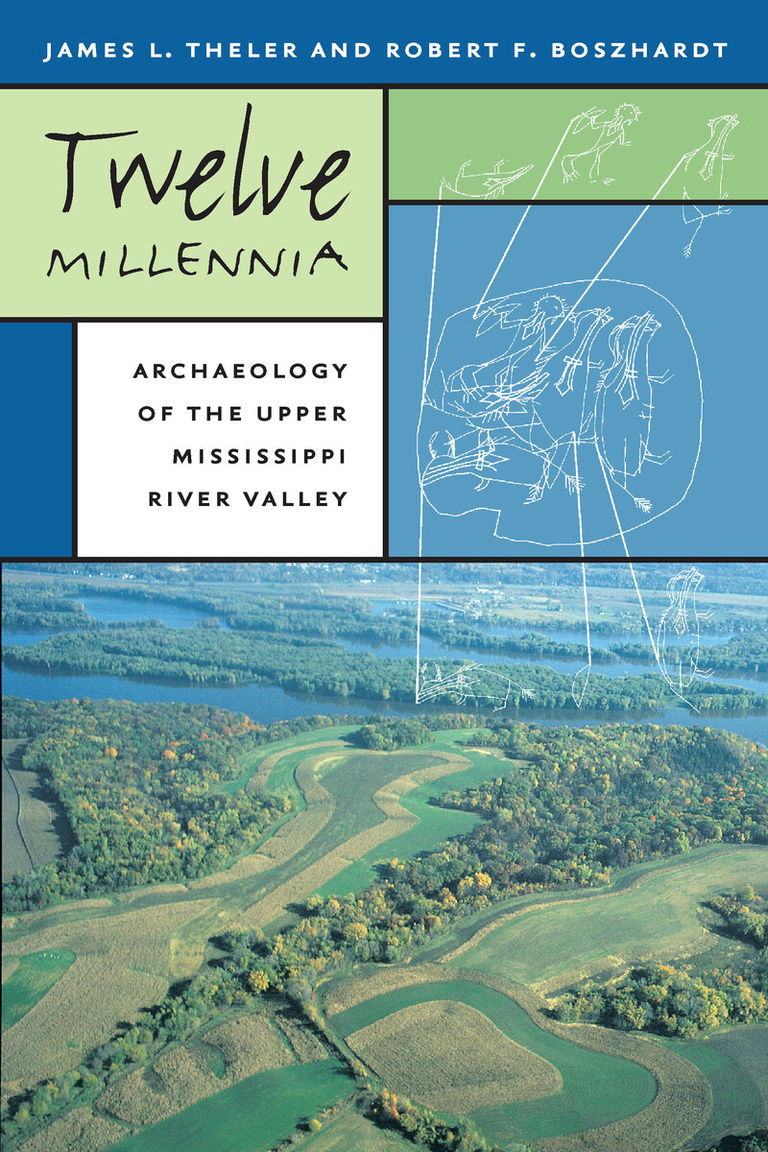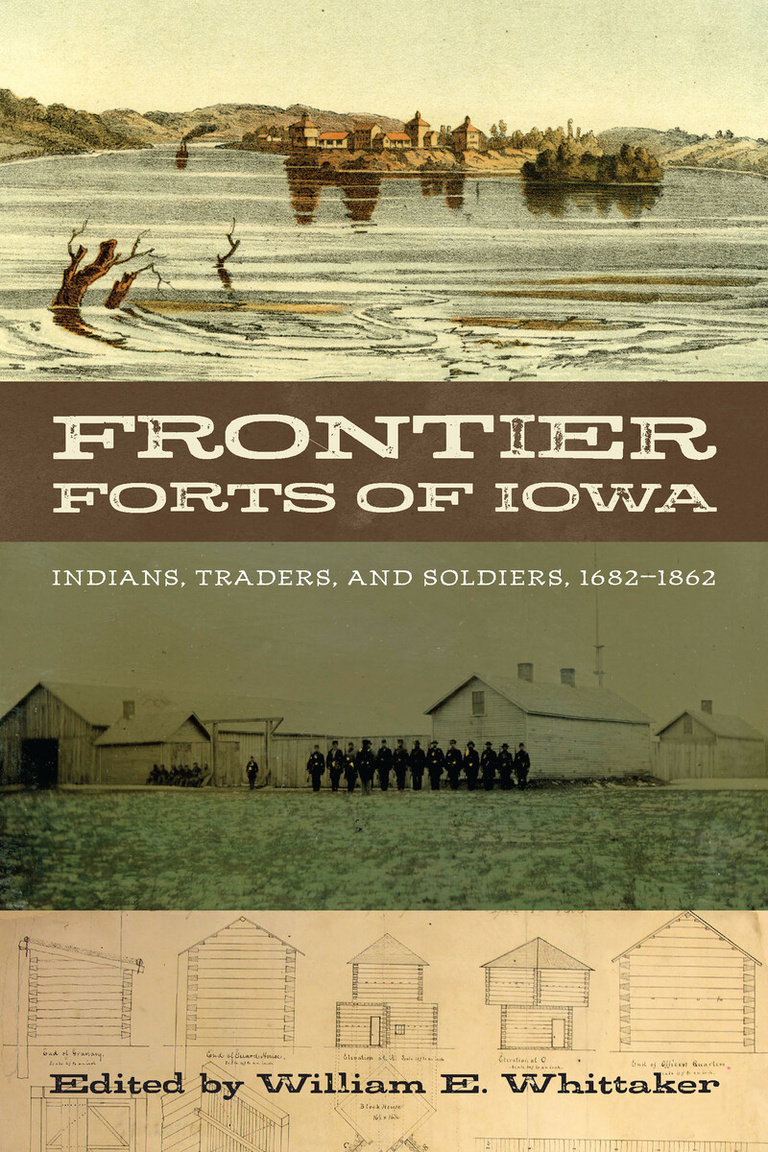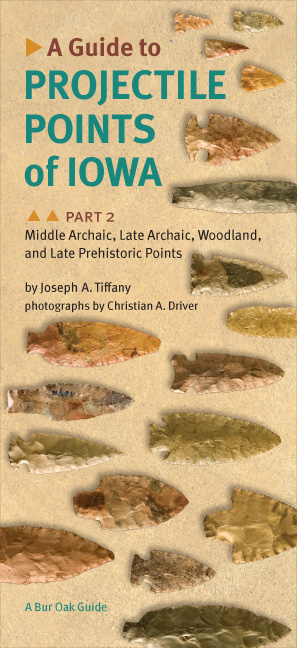The two beautifully illustrated parts depict a total of sixty-one full-size stone point types in color by archaeological period. References are provided for those wishing to learn more about each type shown. Archaeologist Joseph Tiffany lists the stone type for each point as well as its estimated range of use based on calibrated radiocarbon age, catalog number, and the county where it was found. By providing actual-size color images of the typed points, each part is very easy to use in the field, lab, or classroom.
From the highly finished Clovis points of the Paleoindian period to the delicate notched and stemmed points of the Woodland period, these tangible remnants of vanished cultures reveal the huge changes in the lifeways of Iowa’s native populations over time. Lay and professional archaeologists, collectors, students, and enthusiasts will appreciate the beauty of the photos and the usefulness of the information in this pocket guide to Iowa projectile points.
“A portable yet remarkably comprehensive means of identifying the type and age of projectile points most likely to be encountered in the state of Iowa, this guide will be useful for archaeologists looking for a portable field guide as well as for those looking for an effective means of typing and dating points in collections. Each high-quality color photograph is accompanied by an up-to-date summary of the age of each point type. Coupled with the concise directions for describing projectile point forms, the guide provides an effective means of quickly identifying the type and age of points likely to be encountered throughout the state. The comprehensive visual record of points from Iowa contexts is unavailable in any other context. Coupled with descriptions of both the stone raw material and county of origin, it provides a unique and valuable documentation of this important facet of Iowa’s prehistory.”—Colin Betts, Luther College
“Joe Tiffany’s pocket guide for identifying Iowa projectile points is a handy tool for both avocationists and professional archaeologists. Beautifully designed and illustrated with sixty-one type specimens from Iowa archaeological sites, this two-part guide offers quick reference for field identification of the age, cultural affiliation, and materials of artifacts that are collected by the thousands each year. In addition, the guide offers ethical guidelines that balance the enjoyment of artifact hunting with contributions to our collective knowledge. This guide should be carried by all collectors and field archaeologists and should be on hand for all Iowa museums that have Native American artifact collections or patrons who bring them in for identification.”—Robert “Ernie” Boszhardt, author, A Projectile Point Guide for the Upper Mississippi River Valley
“Stone arrowheads and spear points are the most common and easily recognized pre-European artifacts found throughout Iowa. Available now for the first time, the Guide to Projectile Points of Iowa prepared by veteran Iowa archaeologist Joe Tiffany considers nearly fifty stone arrow and spear point types found in Iowa and adjacent states. One of the excellent Bur Oak Guide series, this guide systematically covers the entire 13,000 years of Iowa’s Native American projectile points, from the earliest fluted spear points to the latest triangular arrowheads. Beautifully illustrated with sixty-one full-size, razor-sharp point photographs in color, the two parts of Tiffany’s guide will allow virtually anyone to assign arrow or spear points their correct name and age. A Guide to Projectile Points of Iowa will be an instant classic; it is a must for libraries, museums, nature centers, and all who are interested in Iowa’s pre-Columbian past.”—James L. Theler, coauthor, Twelve Millennia: Archaeology of the Upper Mississippi River Valley
“Projectile point” is a collective term for spear and dart points, arrowheads, and hafted knives. The many Native Americans who have inhabited Iowa shaped points primarily of various chert and chalcedonies found locally or traded regionally. The single point types illustrated in this two-part guide, the first to provide color photographs to scale for all types found in Iowa, show the wide range of variability as forms evolved from the Paleoindian period, 11,100–10,750 BC, to the Late Prehistoric period, AD 1000–1200.
